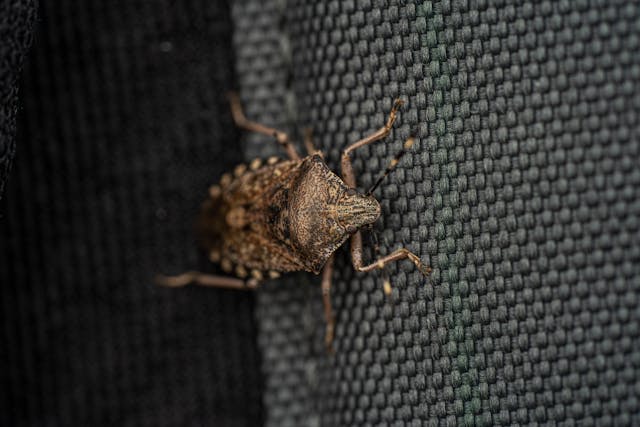A fresh coat of paint can do wonders for your home—enhancing curb appeal, adding protection from the elements, and giving your property a refreshed look. But many homeowners overlook a key part of the painting process: proper surface preparation. It’s easy to think of prep work as a routine task—just a bit of sanding and scraping before the fun begins. However, skipping or rushing through this phase can lead to much bigger issues than peeling paint, especially when it comes to pest problems.
Unaddressed pest activity beneath surfaces or within exterior walls can cause extensive damage that painting alone won’t fix. In fact, painting over these issues without proper preparation can mask the symptoms, making it harder to detect infestations until they’ve gotten worse. From termites to carpenter ants and even birds or rodents, pests can turn your home’s siding, trim, or foundation into their habitat if you’re not careful during painting projects.
Here’s why thorough surface preparation is not just a cosmetic concern—it’s a crucial step in protecting your home from both paint failure and pest invasions.
Pest Activity Can Undermine Paint Performance
Pests like termites, carpenter bees, or ants often burrow into wood, leaving behind tunnels, exit holes, and weakened surfaces. If these areas aren’t identified and repaired before painting, the new paint will have nothing solid to adhere to. The result is premature cracking, bubbling, or peeling—not to mention the ongoing damage being done behind the scenes.
Rodents and birds can also contribute to surface damage. Their nesting and gnawing habits can compromise siding and soffits, creating gaps and openings where moisture can seep in and further degrade the material. Applying paint over surfaces weakened by pests may temporarily hide the issue, but the structural damage will continue to spread, and your paint job won’t last.
Professional surface prep includes inspecting for signs of infestation, repairing or replacing compromised materials, and sealing potential entry points. It’s the only way to ensure your paint bonds well and provides lasting protection.
Unsealed Openings Attract Future Infestations
Even minor cracks, gaps, or holes in your siding or trim can serve as open invitations for pests. Many insects and rodents are excellent at squeezing into tiny spaces—and once they find a way in, they rarely leave on their own. If these openings are not sealed properly during surface preparation, your new paint job could become a bandage over a bigger problem.
Surface prep should involve a detailed inspection of all areas to be painted, especially around windows, doors, vents, and beneath eaves. These are common entry points for bugs and rodents. Filling in cracks with caulk or replacing damaged wood not only helps your paint go on smoothly, but it also creates a physical barrier that keeps pests out.
Failing to seal these areas before painting often leads to recurring infestations, which then require pest control treatments and additional repairs—adding more time, expense, and frustration to what should have been a straightforward project.
Pest Droppings and Residue Affect Paint Adhesion
It’s not just the pests themselves that create problems—what they leave behind can also cause issues. Many pests leave droppings, nests, or oily residues on surfaces they inhabit. If these aren’t removed completely before painting, they can interfere with paint adhesion and cause discoloration over time.

For example, bird droppings are highly acidic and can eat into wood or metal surfaces. If you simply paint over them, the acid continues to break down the material underneath, often leading to blistering or flaking paint. The same goes for insect residues, webs, and nests—all of which create uneven textures and prevent paint from bonding properly.
Effective surface prep involves washing and disinfecting affected areas, removing all contaminants, and allowing the surface to dry thoroughly. This attention to detail helps the paint adhere smoothly and extend the life of your exterior finish.
Surface Prep Is Your Chance to Spot Hidden Damage
Pests often leave behind signs that are easy to miss if you’re not paying attention. The surface preparation stage offers the perfect opportunity to inspect your home for early warning signs—before you invest time and money in painting over them.
You might notice wood that sounds hollow when tapped, small piles of sawdust near the foundation, droppings in hidden corners, or damaged insulation around electrical boxes and vents. These are all signs of pest activity that should be addressed before painting.
Taking the time to look closely during prep means you can treat any pest issues early, repair affected areas, and avoid trapping live infestations behind newly painted walls. Otherwise, you may find yourself repainting within a year due to recurring issues caused by the pests you didn’t notice the first time.
Professional Help Can Make a Big Difference
If your painting project involves a large surface area or an older home, it may be wise to consult with both a pest control specialist and a painting professional. The two often go hand-in-hand. A pest expert can identify active infestations or vulnerable areas that need treatment, while a skilled painter will know how to properly prep surfaces that have been affected by past pest activity.
This collaboration helps ensure the job is done thoroughly, from pest inspection to sealing and painting. It’s a smarter investment in the long run, especially if you want your new paint job to last and your home to remain secure from infestations.
Final Thoughts
Painting your home’s exterior is more than just a cosmetic upgrade—it’s a layer of protection for your property. But if pests are already present or if you skip critical steps in surface preparation, you risk painting over deeper problems that can ruin your results and damage your home.
Surface prep isn’t just about aesthetics. It’s your first line of defense against insects, rodents, and other pests that take advantage of small flaws to gain access to your home. By taking the time to do it right—or bringing in professionals who will—you protect your investment, extend the life of your paint job, and keep your home safer from the inside out.
